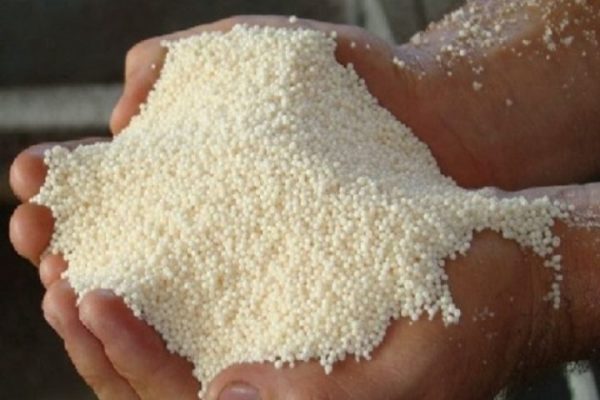Beginning in the spring, a lot of work appears for gardeners, which provides a good laying for a new crop. In order to match the quality of the fruit and varietal yields, various baits are used that saturate the soil with microelements necessary for the growing season. One of the beneficial agents is ammonium sulphate. This article reveals all the secrets of using this unique fertilizer.
Table of contents
What is ammonium sulfate
The peculiarity of the mineral bait is the content of substances important for the growing season of any culture.: sulfur and nitrogen. Ammonium salt due to its properties and safety has been used since the Soviet times in the food and textile industry in addition to gardening. Popularity, not lost until now, due to the wide range of the means and affordable price. Regarding the choice of plants, fertilizer has no contraindications, so it can rightly be called universal. And the climatic conditions do not affect the effect of the mineral additive.
In fact, ammonium sulfate is a chemical (ammonium salt of sulfuric acid), produced by the domestic industry in large quantities due to the use in different areas of the national economy. It is a powder without a characteristic odor with crystallized granules of white, less often gray color. In the agricultural sector, this substance is classified as a nitrogen-containing fertilizer. The microelements included in the composition contribute to the intensive growth of plants and the formation of high-quality fruits.
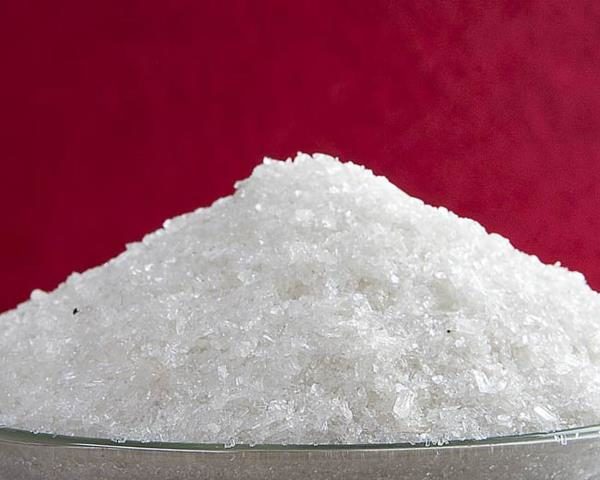
Ammonium sulfate and urea alone
Ammonium sulfate (NH4) 2SO4 (N21 S24) and urea (NH2) 2CO, (N46) are different products, but belong to the same group of nitrogen fertilizers. Ammonium salt is not inferior in its properties to many nitrogen-containing complexes, for example, unlike carbamide, it has sulfur. Another distinctive quality is considered a more affordable price.
Both nutrients are water soluble and well absorbed by plants. However, urea acidifies the soil worse than the sulfur-containing composition. And besides, it is ineffective on wet and cold soils. Ammonium salt acts equally well in different environments.
Properties and benefits from the application
Often there is a pattern on the beds, when the green of the plants begins to turn pale, the color of the leaves changes.These symptoms indicate a lack of sulfur and nitrogen in the soil. In ammonium sulphate, nutrients are contained in sufficient quantities (24%, 21%), so the first aid is to enrich the soil with mineral fertilizer in dry or dissolved form.
Properties of ammonium salt:
- increases soil fertility when digging;
- nourishes the soil with nutrients, which contributes to the growth of young shoots;
- has a beneficial effect on the formation of fruits, their quality;
- may be used in combination with other substances for complex fertilizer.
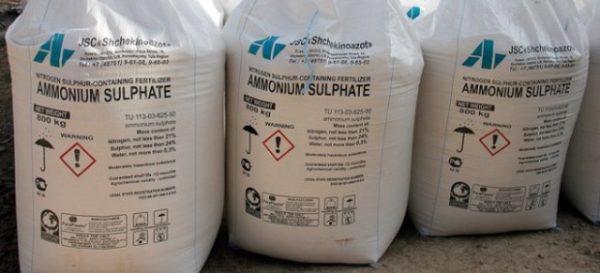
Primary fertilizer characteristics:
- the saturation of the composition of sulfur, which has a positive impact on the quality and quantity of the crop;
- rapid solubility in water, which makes it possible to feed the soil in combination with irrigation;
- convenient and easy to use (dry or dissolved in water);
- reasonable price (cost competes with the majority of nutritious mixes);
- efficiency is noted a few days after adding ammonium salt to the soil;
- Trace elements that are valuable for plants remain in the soil for a long time, maintaining its fertility;
- recharge is absolutely safe for the health of people and animals, when used, you can do without means of protection.
The only drawback of using the product is considered to be a low nitrogen content in comparison with ammonium nitrate. The chemical has no other significant drawbacks.
Application for different cultures
On average, ammonium salt is applied to the beds in the amount of 40 grams. per 1 m2, but the figures may vary depending on which culture the mineral dressing is used for.
Potatoes
The application rate when digging up the bed varies in the range of 25-40 grams. on 1 m2.Even with a slight dose violation, nitrates do not accumulate in root crops. Enrichment of the bed with fertilizer promotes the growth of vegetables, improves not only the yield, but also the quality of tubers (the level of starch content increases). Immunity is also strengthened; after treatment, the plant is less affected by scab and rot.
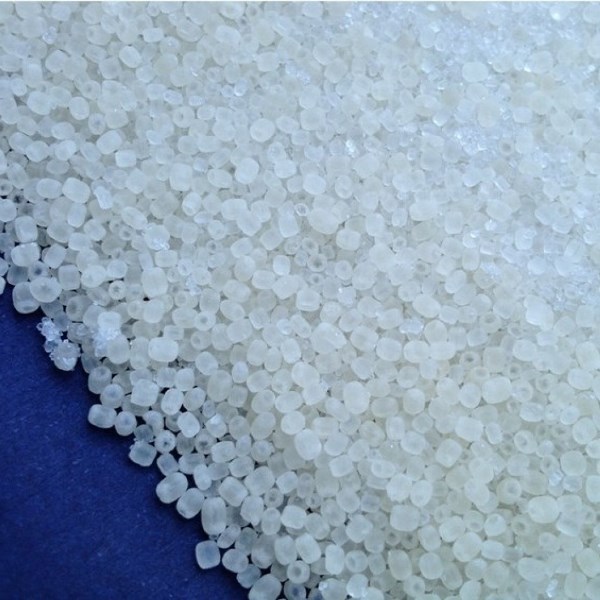
Cucumbers
Early crops, which include cucumbers, require regular fertilizing for the development of the whip and the formation of fruits. Ammonium sulphate contains the necessary substances that stimulate growth and prolong the fruiting period. It is made in liquid form 2-3 times per season.
This should be done 20 days after emergence of shoots, then every 2 weeks. The best treatment time is after watering or precipitation. 14 days before harvest, the use of any additional feedings is stopped.
Strawberry
Ammonium salt is introduced into the ground during the digging of the earth in preparation of the bed for planting. After planting the seedlings, fertilizing in liquid form is made for each bush in the amount of 1 l per each plant. Working solution (Art. L.fertilizer on a bucket of water) will be even more nutritious if you add a glass of mullein to it.
Cabbage
When enriching the soil with fertilizer, it is necessary to observe the terms of treatments. In the opposite case, feeding will provoke a rapid growth of greenery or will prevent the growth of the cabbage sheets. The consumption rate of funds - 30 gr. on 1 m2. It is necessary to deposit the powder during the digging of the earth or one week after planting the seedlings, using a liquid form of top dressing.
Greenery
For all types of greens, ammonium sulfate is considered an excellent feed. Besides fertilizer can be used on all phases of vegetation. The tool can quickly compensate for the lack of microelements after the first harvest is removed so that the repeated seeding develops with the same intensity.
Powder consumption when digging - 20 g. on 1 m2. A couple of weeks before harvest, the use of a growth stimulator is not recommended.
Harmful effects on vegetables
The negative impact of ammonium sulfate on vegetable plants is not observed. Even when exceeding the norm of consumption, fruits do not accumulate toxins and other harmful substances. On the contrary, vegetables fed with such dressing for a long time retain their presentation, juiciness, taste and vitamins.During storage, the processed crop is much less likely to form rot.
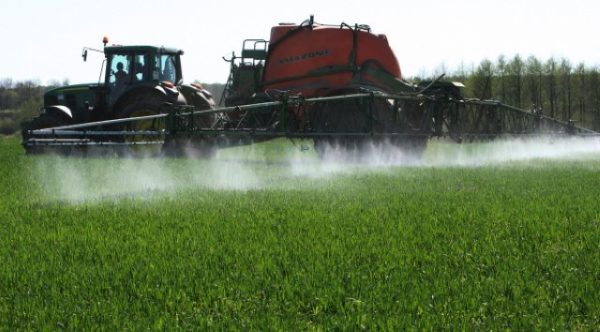
In gardening, ammonium sulfate is a very popular product, the composition is suitable for almost all crops grown on the site. It can be used throughout the season, but in acceptable quantities, so as not to provoke the opposite effect.
